
William Gerstenmaier (BSAAE ’77, PhD ’93, HDR ’19), associate administrator for Human Exploration and Operations Mission Directorate at NASA.
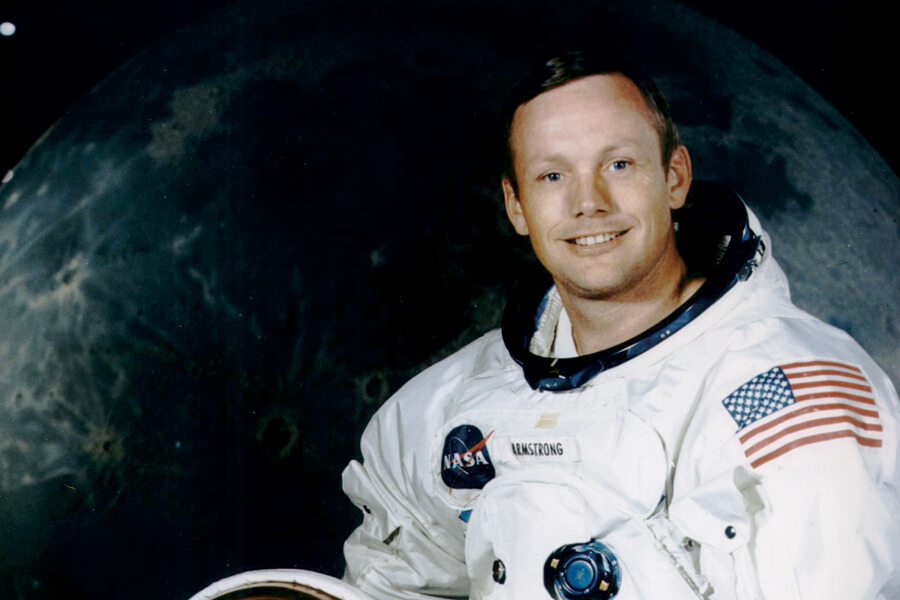
Neil Armstrong (BSAAE ’55, HDR ’70) On July 20, 1969, Purdue alumnus Neil Armstrong took his famous “small step” into history as the first human to set foot on the moon.

Eugene A. Cernan (BSEE ’56, HDR ’70) In 1972, Eugene Cernan became the last person to leave his footprints on the moon.
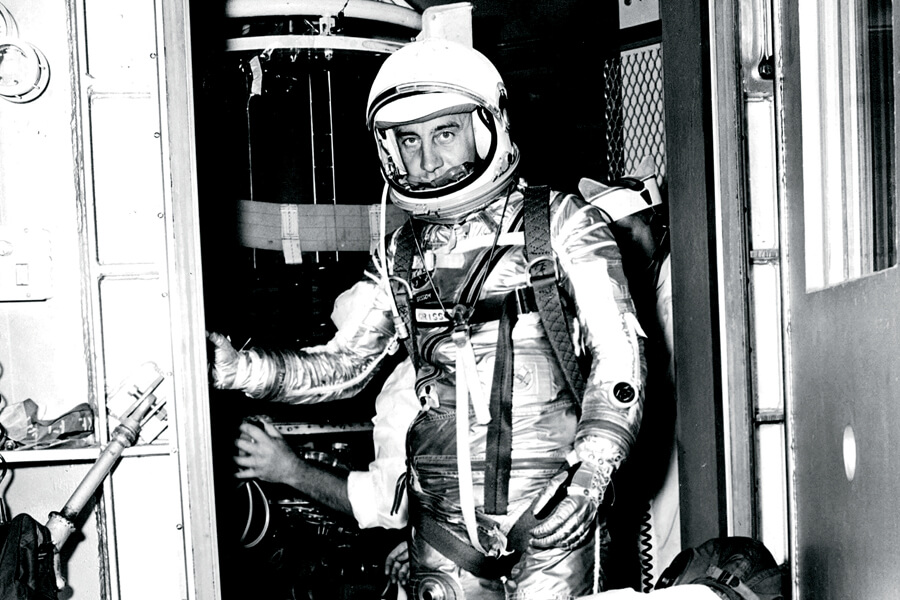
Virgil I. “Gus” Grissom (BSME ’50) One of seven astronauts for the pioneering Project Mercury — the United States’ first attempt at manned space flight.

Roger Chaffee (BSAE ’57) in 1967 tragically lost his life in a flash fire that also took the lives of Gus Grissom and Ed White.
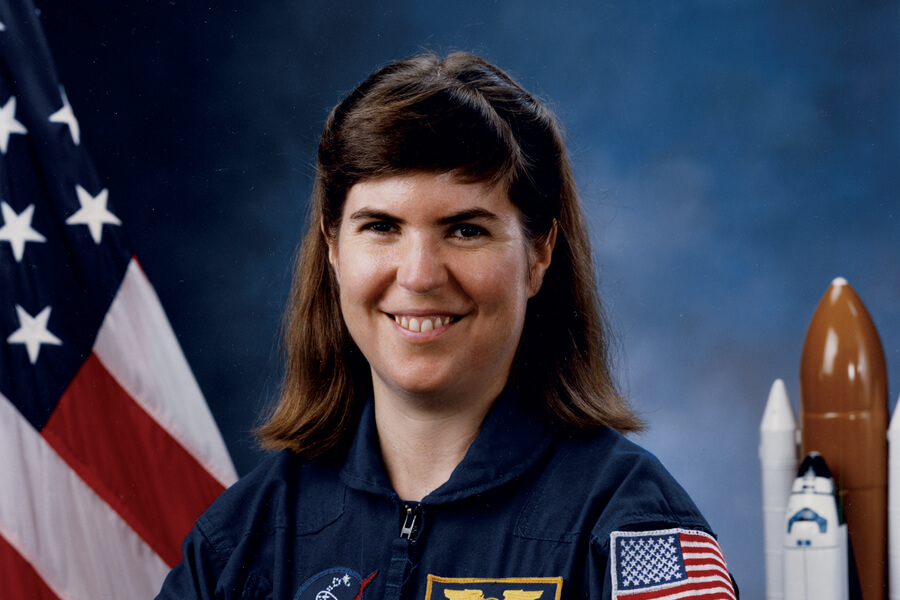
Janice E. Voss (BS Engineering Science ’75), Purdue’s first female astronaut. Voss flew in space five times, traveling a total of 18.8 million miles in 779 orbits over 49 days. Following her death from breast cancer in February 2012, Visiting Our Solar System, a $1.5 million student-led interactive exhibit was constructed, puts the size of space in perspective and celebrates her contributions.

Mark Geyer (BSAAE ’82, MSAAE ’83), the 12th director of NASA’s Johnson Space Center, which is the hub of human spaceflight activity, is charged with getting JSC ready for those launches, while still continuing to fly ISS. The next phase will be accessing the moon.
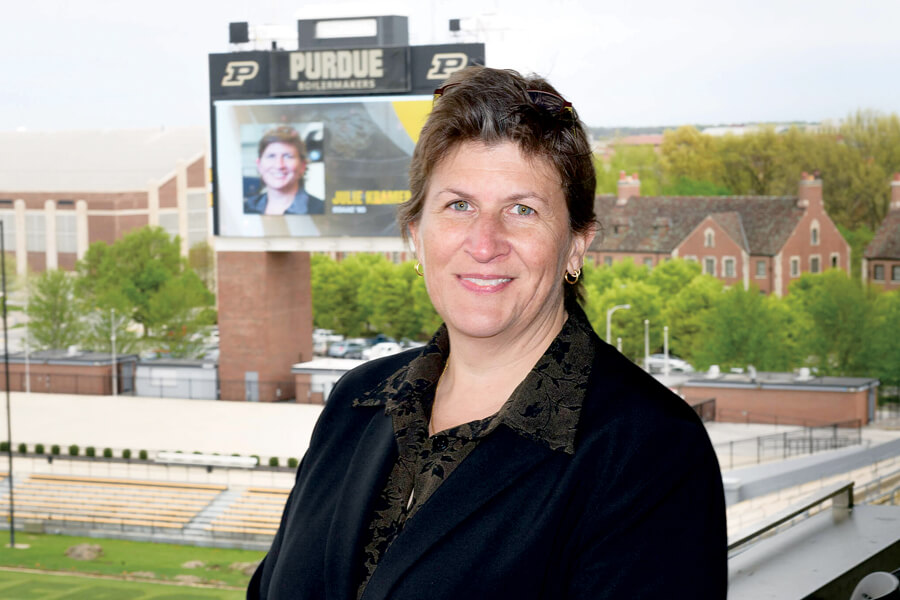
Julie Kramer White (BSAAE ’90), deputy director of engineering at NASA Johnson Space Center and former chief for the Orion Multi-Purpose Crew Vehicle, leads a team at NASA developing the first human-rated deep space exploration vehicle since Apollo. President Barack Obama recognized Kramer White for her work overseeing the successful Orion flight test.
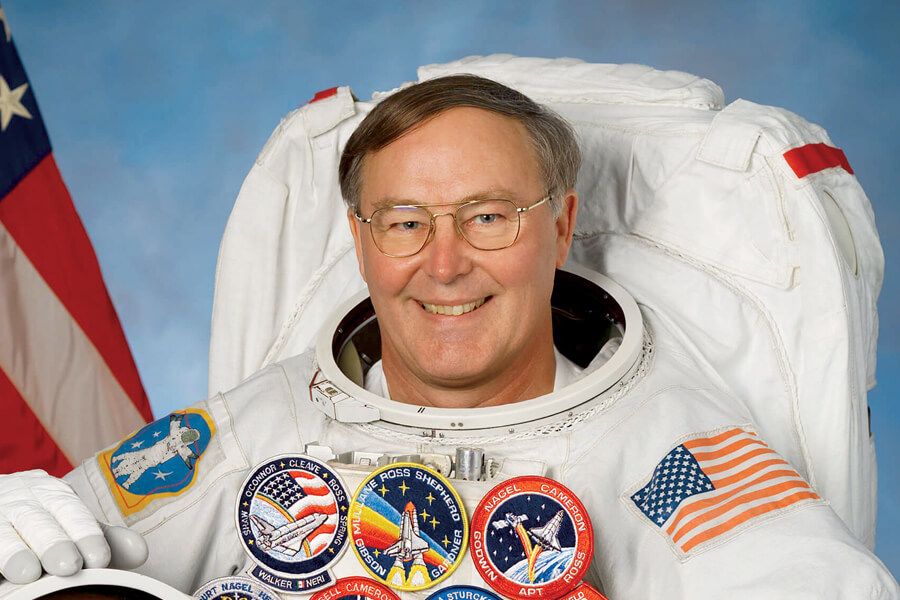
Jerry L. Ross (BSME ’70, MSME ’72) was the first human to fly on seven missions orbiting Earth, making nine space walks.
Charles Walker (BSAAE ’71) was confirmed by NASA as the first industrial payload specialist.
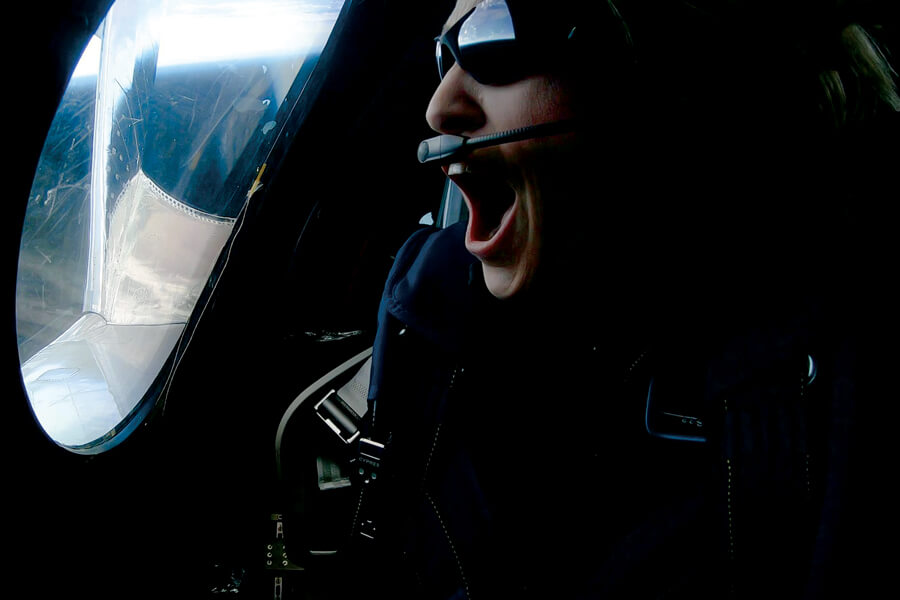
Beth Moses (BSAAE ’92, MSAAE ’94, OAE ’18), chief astronaut instructor at Virgin Galactic, was the 571st human to travel into space and the first woman to fly to space onboard a commercial vehicle. In previous test flights, there were only two pilots and no passenger. She qualified for Commercial Astronaut Wings.

Allison Bolinger (BSAAE ’04), and Marcos Flores (MSAAE ’15), are flight directors at NASA’s Johnson Space Center.
Anna-Maria Rivas McGowan (BSAAE ’92) is NASA’s senior engineer for complex systems design.

Amy Ross (BSME ’94, MSME ’96) is head of Advanced Spaceflight Pressure Garment Development at NASA. Ross has designed the gloves used by every spacewalking astronaut since 1998, including her father.
Kevin Miller (BSAAE ’03, MSAAE ’05, OAE ’16) is the director of Liquid Engine Development at SpaceX.
Donald Steinmeier (BSME ’55) is the former chief engineer at McDonnell Douglas, Boeing.
J. David Schweikle (BSAAE ’59, OAE ’16) is the former vice president of Boeing Delta Launch Services.
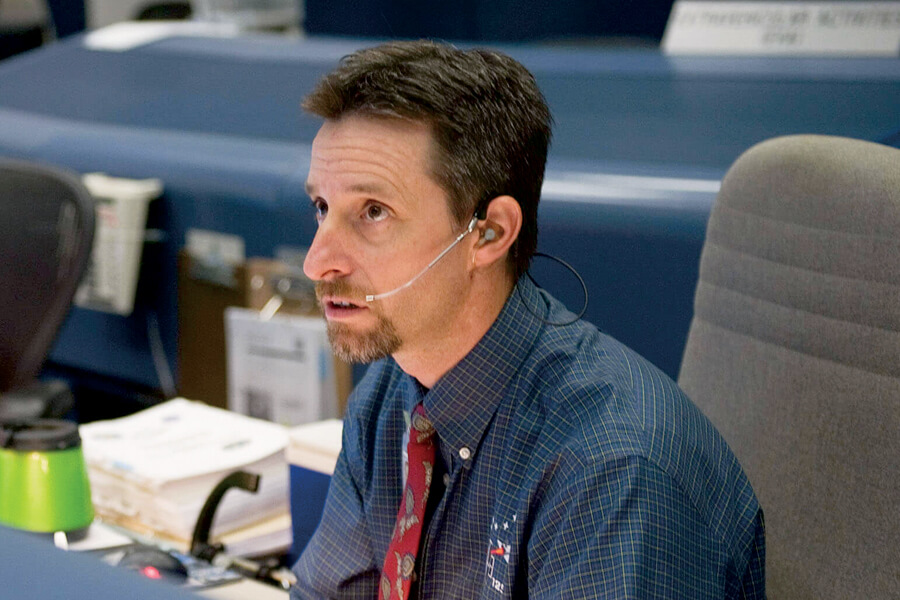
Gary Horlacher (BSE IDE, Systems Engineering ’89) is flight director at NASA’s Johnson Space Center. He served as lead flight director for the Expedition 55 mission to the International Space Station that carried two Purdue alumni astronauts — Drew Feustel and Scott Tingle (BSME ’88).

Allissa Battocletti (BSAAE ’11) works at Johnson Space Center in Extravehicular Activity Operations. She leads classes for astronauts and conducts lessons at the Neutral Buoyancy Lab, where astronauts train in near-weightless conditions.
Mark Baldwin (BSME ’97) is a biomechanical engineer for Lockheed Martin. He tests human life-support systems in the next generation Orion capsule.
Tamaira Ross (BSAAE ’96, MSAAE ’98) is principal manager and configuration design engineer working on Blue Origin’s New Glenn orbital launch vehicle program.
Loren Shriver (MSAAE ’68) reached a record-setting altitude of 38 miles.
Mark K. Craig (BSAAE ’71) is the former associate director of space development and commerce and deputy project manager for Mars Rover Sample Return at NASA’s Johnson Space Center.
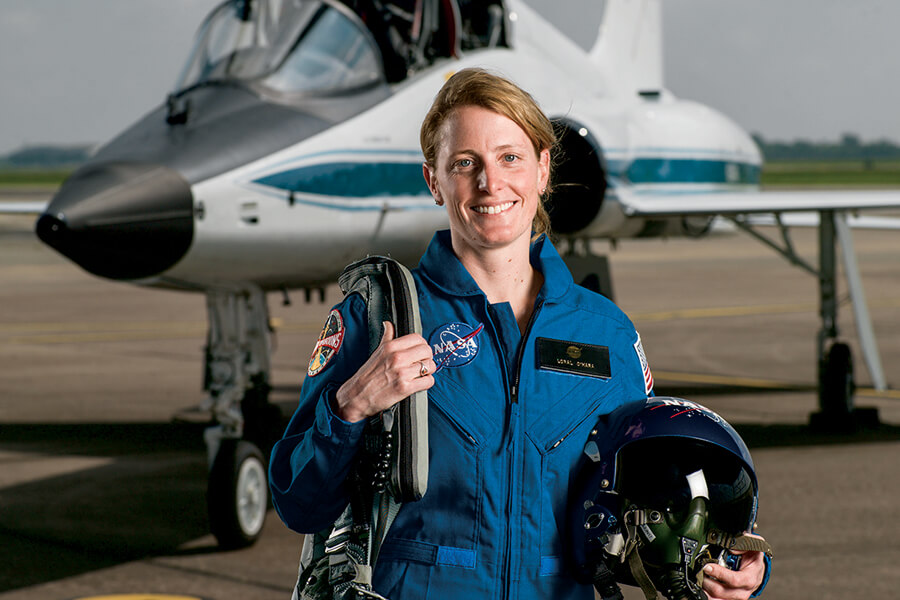
Loral O’Hara (MSAAE ’09) is an astronaut candidate in training.
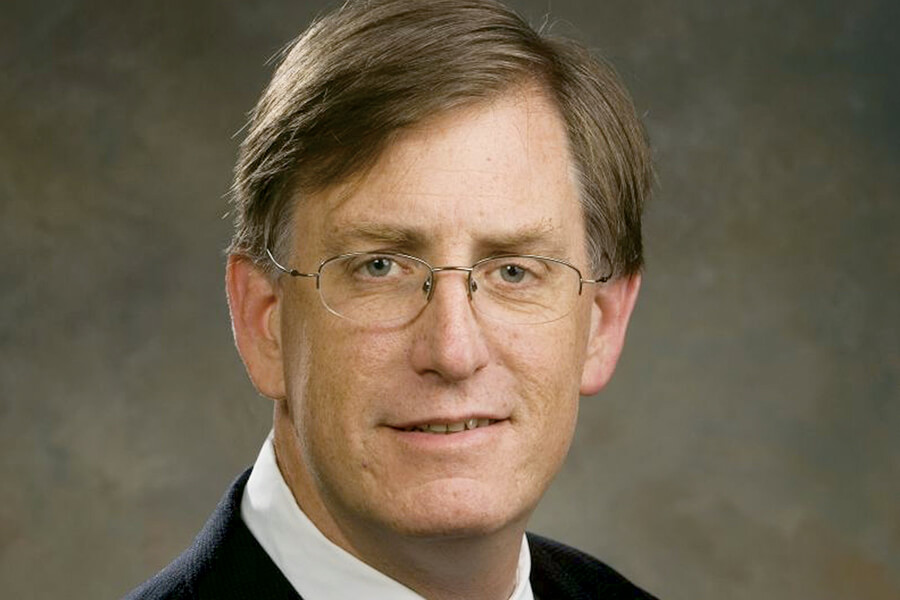
Daniel Dumbacher (BSME ’81) is executive director of the American Institute of Aeronautics and Astronautics, the world’s largest aerospace technical society. He served as deputy associate administrator of NASAs Human Exploration and Operations Mission Directorate from 2007 to 2014. Dumbacher was a professor at Purdue’s School of Aeronautics and Astronautics from 2014 to 2017.
“We want to go forward to the moon. When we go forward to the moon, we go in a different way than we went before. We are going to go in a sustainable manner with international partners, with the commercial sector. It’s going to take all of us pulling together to make this happen. And then we leave behind sustaining pieces that allow us to continue doing more and more dynamic things, and eventually head out to Mars with humans. So, we are going to move human presence in a sustainable way.”
— William Gerstenmaier

The cornerstone of the Visiting Our Solar System interactive exhibit in Discovery Park is the design of the sun, which is 45 feet in diameter. Surrounding the VOSS sun are the planets Mercury, Venus, Earth, Mars, Jupiter, Saturn, Uranus and Neptune set into a series of curved, 6-foot-high walls.
Purdue University photo – Mark Simons
Purdue alumni have flown in about 37% of all human space flights.
